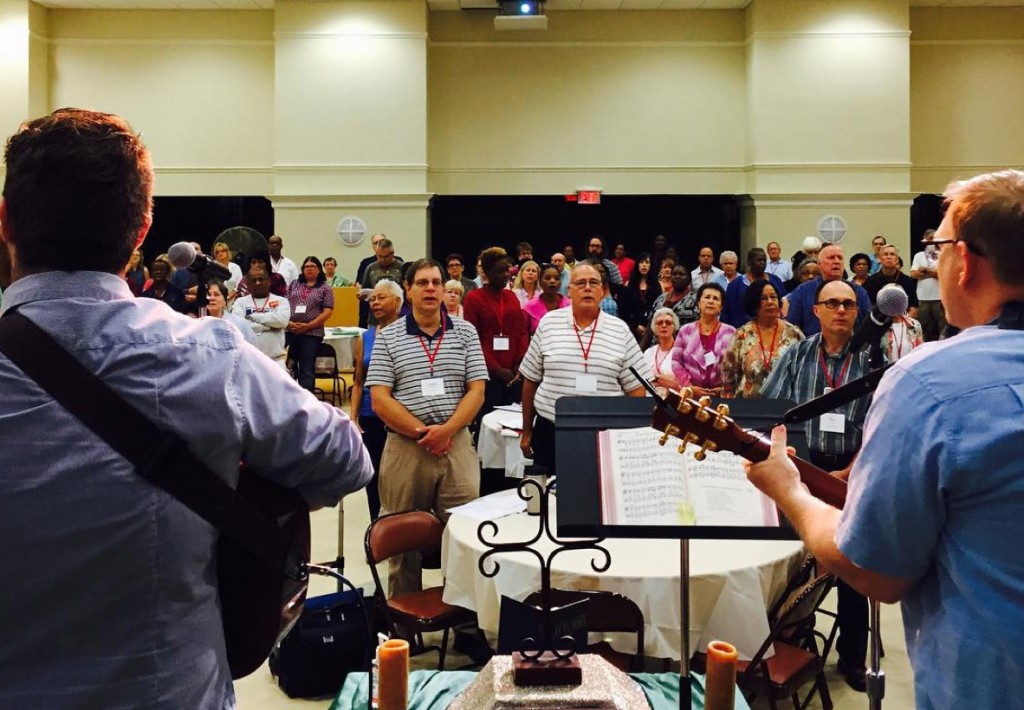Social media is more prevalent than ever in society and has become another avenue for churches to communicate.
That’s why social media was one of four learning tracks at the United Methodist Church of Greater New Jersey’s Laity Leadership Academy in September at Haddonfield UMC. Those in attendance heard and learned about how to use social media as a communication platform.
“It was a wonderful opportunity to exchange ideas, learn new tips and share in fellowship,” said Paige Chant, the communications specialist at Morrow Memorial UMC in Maplewood. “Afterward, I felt inspired to develop a comprehensive strategy for using social media in a more effective way, not only for publicity and promotion purposes, but as a way of expanding our church’s sense of community, hospitality and outreach.”
The primary social media tool that churches use s Facebook, while Twitter, Instagram and YouTube are also used to a lesser extent. One thing instructor Brittney Reilly, GNJ’s Online and Digital Communications Manager, emphasized is that simply having an account on any of those social media sites is not enough. It’s important to use and update those accounts on a regular basis.
“We got tips such on the importance of posting on a daily basis to look more vital,” said Laura Jaskot, a Certified Lay Servant and Worship Committee Chair at Broad Street UMC in Burlington. “There’s nothing worse than a social media page that isn’t current. I’ve made a concerted effort to post more on Facebook.”
Other items of discussion included knowing the difference between a Facebook group and a Facebook page, when and how to use hashtags, seeing examples of a church newsletter, and viewing a livestream example presented by Delran UMC pastor Chris Miller. Haddonfield UMC pastor Chris Heckert also gave a presentation on how churches can leverage all types of media for ministry.
“I absolutely feel that using more social media can help the church,” Jaskot said. “First, it can help reach people who aren’t currently members or who haven’t attended in some time. Second, it can reach people very, very quickly with a lot of information.”
Another area covered included some guidelines to use when creating a church website. Some at the workshop said their churches have plans not just to create a website, but to do it correctly.
“We are looking forward to creating a website the right way for the right reasons,” said Robert Hatfield, a Lay Servant and council person at Pleasant Grove UMC in Jackson. “I think, too, that social media is something we all should become involved in since this is becoming a social media culture.”
Stephen Latus, a communications volunteer at Christ UMC in Piscataway, said his church has used that culture by keeping its Facebook page active.
“I’m convinced that Facebook is enabling our church to build a greater sense of family,” Latus said. “The workshop reinforced the importance of what we’re already doing and provided practical ideas for taking further steps to share the exciting things we do in our community.”
One of the goals of the academy is not just to provide information, but to give those in attendance the tools and motivation to return to their churches and be active in creating a social media ministry.
“I came back very energized and ready to move forward boldly with our church’s social media plan,” Jaskot said. “There are three of us that are going to be working on our church’s website as well, making sure that it is current and relevant.”
The other tracks at the academy were vital small groups, inspiring worship and an evangelism church. Each track was designed to give participants hands-on tools they can use to transform their ministry.
Find out more about the Laity Leadership Academy here

